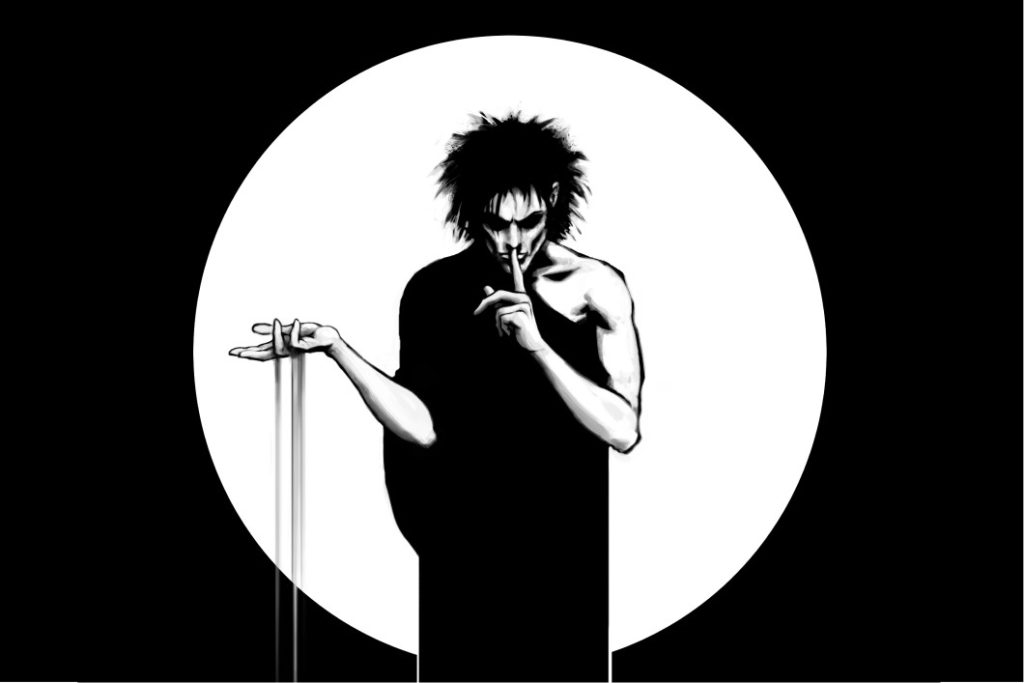Fantasy and fiction is a magical and enjoyable genre. It offers an escape from the real world and lets us imagine a world filled with endless and logicless possibilities, love and compassion, and even hatred and mystical wars. Be it a book or a movie, fantasy pushes us to suspend our beliefs and what we know to be true, only to indulge and follow a world filled with imagination and creativity.
For me, it was Neil Gaiman’s graphic novel series The Sandman which gave me closure in my teen years and even now. The first time I read The Sandman Vol. 1: Preludes & Nocturnes, I was immediately hooked. Not only was it that Gaiman’s storytelling combined with Dave McKean’s artwork was a mesmerizing piece of literature itself, it also offered reassurance. When I started reading and collecting the rest of the series, it was safe to say, I was struggling with making sense of the world and why I had such bad luck.
Reading about Morpheus’ struggles to reclaim his realm and the way The Endless influenced the world gave me perspective.
Yes, it is all fiction and does not absolutely reflect everything in the real world. It is not supposed to. Nevertheless, with a little suspension of my belief and the ‘what if the world does work this way’ merged with my existential crisis. Gaiman’s The Sandman became the story which gave me comfort during dark times and made me question less about what my life was to become in the next 10 years.
The Sandman’s narrative travels across time and space. It teleports the reader to mystical and mythological regions and otherworldly realms. It is filled with legendary and historical iconic individuals that one might immediately recognize like William Shakespeare, Thor, Orpheus and a plethora of other characters. Given that it is set in the DC universe, it is safe to anticipate intermittent cameos from the DC canon, such as John Constantine and the Martian Manhunter. It also includes some lesser-known DC characters, such as Hector Hall and Element Girl. With familiar characters, Gaiman implements what is known as ‘counterhistory’. He twists and rewrites the narrative of these characters while retaining their essence to fit them into The Sandman universe.

There are many like me who hold this series so close to their hearts. As such, the Netflix live-action adaptation has a lot at the stake. The dark fantasy tales in the comics are already filled with artwork that takes a while for the human eye to adjust to. When I read The Sandman: Book of Dreams, an anthology of short stories based on The Sandman comic book series, which did not have any images, I struggled to visualize the images. The story was bewildering and the dark details were precise. Yet, to be able to actually come up with these images in my mind was a challenge. Now, although Netflix has a guide filled with images to make the show as best as it can be, Netflix adaptations are known to disappoint. Let’s keep in mind, this series was deemed unfilmable for decades.
There have been numerous attempts to adapt it for both big and small screens, but Gaiman consistently rejected them, waiting for the perfect opportunity.
Most famously, Gaiman and Joseph Gordon-Levitt collaborated on a 2014 film adaptation that ultimately failed due to creative differences and disagreements over the script. However, it was difficult for Gaiman to say no when Netflix approached Gaiman offering to authentically serialize the comics, coupled with a huge budget and a superb cast.
The live-action version of The Sandman graphic novels began production in July 2019, according to a press release, which also confirmed that Netflix had the guts to do so. In fact, by producing it, they would essentially surpass DC Entertainment’s previous record for most expensive TV production. The dream team was put together with showrunner Allan Heinberg (Wonder Woman), producers David S. Goyer (Batman Begins, The Dark Knight), and Gaiman.
In an interview with Empire Magazine, Gaiman has said that each episode is “wildly different”. He added that, “You watch Episode 1 and think, ‘Oh, I get this thing: it’s like “Downton Abbey,” but with magic,’” further stating, “Then you’ll be wondering, ‘What the hell is this?’”. This picks up pace and gets dark and twisted in Episode 5 balanced with a wholesome Episode 6.
The adaptation of Season 1 has a total of 11, hour-long episodes, covering Volume 1: Preludes and Nocturnes, Volume 2: The Doll’s House and the first half of Volume 3: Dream Country. The hope is not just that it lives up to the comic books but also that all 10 of the volumes can be adapted without being canceled midway, something Netflix has a notorious reputation for like the cancellation of Cowboy Bebop. However, Gaiman has previously stated that there are various safety nets in place to prevent such a unfortunate occurrence.
As an avid Gaiman reader, I am slightly suspicious of what to expect from the Netflix adaptation and how it may turn out. Despite the trailers and sneak peaks, I still have my doubts. I might not even watch it just so I am not disappointed and slightly enraged. After all, we know what happened to American Gods.